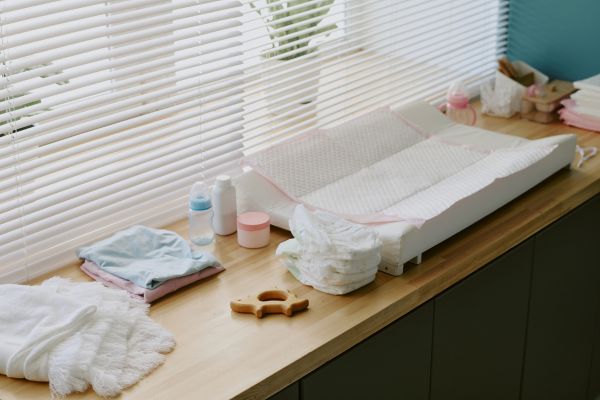Ah, baby sleep—it’s one of the most talked-about topics among new parents. Just when you think you’ve got your little one on a perfect sleep schedule, they start waking up after just 20-30 minutes. If this sounds familiar, you might be dealing with what’s known as a “false start” in baby sleep. In this comprehensive guide, we’ll explore what false start baby sleep is, why it happens, and how you can manage it to help your baby—and yourself—get a better night’s rest.
What is False Start Baby Sleep?
A false start in baby sleep occurs when a baby wakes up shortly after being put to bed, typically within the first hour. This can be incredibly frustrating for parents who thought they were in for a peaceful evening. But don’t worry, you’re not alone, and there are ways to address this common issue.
Causes of False Start Baby Sleep
Understanding the root causes of false start baby sleep can help you address the problem effectively. Here are some common reasons:
Overstimulation
Babies can become overstimulated if they’ve had a particularly active or exciting day. This can make it hard for them to settle down and stay asleep.
Overtiredness
Contrary to what you might think, an overtired baby can actually have more difficulty falling and staying asleep. When babies are overtired, their bodies produce cortisol, a stress hormone that can disrupt sleep.
Hunger
Sometimes, false starts can occur if your baby is still hungry. Ensure they’re getting enough to eat before bedtime.
Discomfort
Any discomfort, such as a wet diaper, temperature issues, or teething pain, can cause a baby to wake up shortly after falling asleep.
Sleep Environment
A noisy or uncomfortable sleep environment can also lead to false starts. Make sure the room is quiet, dark, and at a comfortable temperature.
How to Manage False Start Baby Sleep
Now that we’ve covered some potential causes, let’s dive into solutions. Here are several strategies you can try to manage and reduce false start baby sleep.
Create a Consistent Bedtime Routine
Babies thrive on routine. A consistent bedtime routine can signal to your baby that it’s time to wind down and go to sleep. This might include a warm bath, a feeding, a story, and some gentle rocking.
Adjust Nap Times
Pay attention to your baby’s nap schedule. Too much daytime sleep or naps that are too close to bedtime can interfere with nighttime sleep. Experiment with adjusting nap times to see if it helps.
Ensure Your Baby is Comfortable
Check for any discomforts that might be waking your baby up. This includes making sure their diaper is clean and dry, the room is at a comfortable temperature, and they’re not too hot or cold.
Offer a Dream Feed
A dream feed involves feeding your baby right before you go to bed, even if they’re asleep. This can help ensure they’re not waking up due to hunger.
Create a Calming Sleep Environment
A calm, quiet, and dark sleep environment can make a big difference. Consider using white noise to mask any household sounds that might wake your baby.
Monitor Stimulation Levels
Keep an eye on your baby’s activity level in the hour leading up to bedtime. Aim for calm, soothing activities rather than stimulating ones.
FAQs About False Start Baby Sleep
What should I do if my baby wakes up after a false start?
If your baby wakes up shortly after being put to bed, try to soothe them back to sleep without picking them up. Gentle patting, shushing, or a pacifier can help.
How long do false starts typically last?
False starts are usually a phase that babies go through. With the right strategies, most babies outgrow this phase within a few weeks to a couple of months.
Can teething cause false start baby sleep?
Yes, teething can cause discomfort that leads to false starts. If you suspect teething, try using a teething gel or giving your baby a cold teething ring before bed.
Is it normal for toddlers to have false starts?
While false starts are more common in infants, toddlers can experience them too. The strategies for managing false starts are similar regardless of age.
Should I let my baby cry it out if they wake up after a false start?
The cry-it-out method is a personal choice and may not be suitable for every family. There are gentler sleep training methods you can try if you prefer not to let your baby cry it out.
Summary
False start baby sleep can be a challenging phase for both parents and babies, but it’s important to remember that it’s usually temporary. By understanding the causes and implementing the strategies outlined above, you can help your baby (and yourself) get a better night’s sleep. Consistency is key, and with a bit of patience and perseverance, you’ll likely see improvement.
Authoritative Links
- https://www.sleepfoundation.org
- https://www.babysleepsite.com
- https://www.healthychildren.org
- https://www.webmd.com/parenting/baby/sleep-12
- https://www.whattoexpect.com/first-year/sleep-training/
Incorporate these tips into your routine, and soon, those false starts will be a thing of the past. Happy sleeping!



